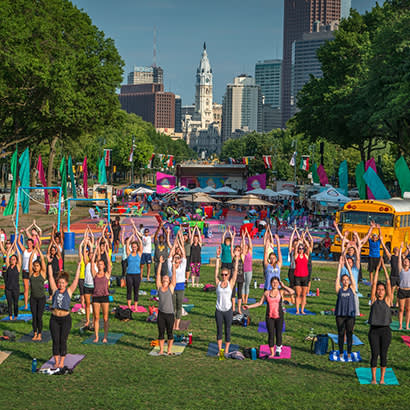
For an enhanced digital experience, read this story in the ezine.
Part of why parks and recreation doesn’t receive more of the rave respect it deserves, in my opinion, is because most people notice programs far more than the objectives behind them.
That’s not surprising. It’s always easier to focus on outward expressions than on internal improvements of the mind, body and soul. But that’s where the common disconnect begins, I believe.
When we providers declare that parks and recreation are essential community services, what does that mean to our constituents? What is our bottom-line purpose of enabling quality leisure experiences? And are we cognizant enough of it?
- Is it just a walk in the park — or is it physical exercise, stress relief and mental rejuvenation?
- Is it merely a ‘Paint With Me’ class (with wine!) — or is it stretching skills and enriching relationships?
- Is soccer practice just about scoring a trophy — or is it developing fine-motor skills, building teamwork, modeling good sportsmanship, and growing cooperative social interactions among diverse teens, teams and talents?
- Is it merely an object of public art — or is it celebrating cultural heritage, invigorating a downtown district, connecting destinations, and attracting visitors, tourists and new businesses?
- Is it just an evening activity — or is it character development, [anti-gang] intervention, and preventative treatment for abusive and addictive behaviors?
Are we strategically planning with such measurable outcomes in mind, or are we satisfied that it was “fun?”
Here’s the crux: Are we building people — or just running programs? Are we purposefully collaborating with experts from other disciplines in meeting people’s needs? And are we measuring what truly matters?
Because here’s the other just-as-important part of our jobs: we must show it. Moving beyond returns on investments, attendees and social media stats, are we documenting personal and social good in our value statements? Can we point to specific cases of cleaner resources, less waste, crises averted, problems solved and healthier lifestyles? Are we enriching our neighbors’ lives, improving the livability of our cities and ensuring a more equitable future?
If we are to convince a wider audience of the great worth of our indispensable services — and, in turn, influence higher funding and priorities by decision-makers — we must deliver whole goods. We can’t merely insist that parks and recreation are essential, we must intentionally demonstrate it — and prove it!
Editor’s Note: The above originally appeared as a post on NRPA’s Open Space Blog. Read the original text published on June 7.
Tim Herd, CPRE, is the CEO of the Pennsylvania Recreation and Park Society and a Member of Parks & Recreation magazine's Editorial Advisory Board.

